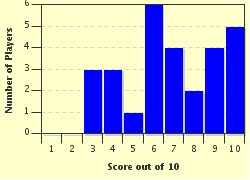Quiz Answer Key and Fun Facts
1. During which Korean dynasty was the Kyujanggak, or Royal Library, built in 1776?
2. The Changdeokgung Palace was chosen to be the location for the Kyujanggak, or Royal Library. In which city, still important in South Korea today, was the palace located?
3. For which Korean art form was the Kyujanggak, or Royal Library, named?
4. Which of the following rulers founded the Kyujanggak, or Royal Library, in Korea?
5. What was one of the original purposes of the Kyujanggak, or Royal Library, in Korea?
6. The king who built the Kyujanggak, or Royal Library, in Korea was also hopeful that it would attract scholars who would help advise him.
7. The philosophy practiced by the king played an instrumental role in the establishment of the Kyujanggak, or Royal Library, in Korea. Which of the following was considered to be the most important philosophy of the time?
8. The collection at the the Kyujanggak, or Royal Library, housed the "Annals", or "True Record" of the ruling family. What is the Korean word for annals?
9. Which of the following statements surprisingly best describes the use of the "Annals" or "True Record" that was kept in the Kyujanggak, or Royal Library in Korea?
10. Today the "Annals" or "True Record" kept in the Kyujanggak, or Royal Library in Korea, has been translated into other languages.
Source: Author
ponycargirl
This quiz was reviewed by FunTrivia editor
bloomsby before going online.
Any errors found in FunTrivia content are routinely corrected through our feedback system.

